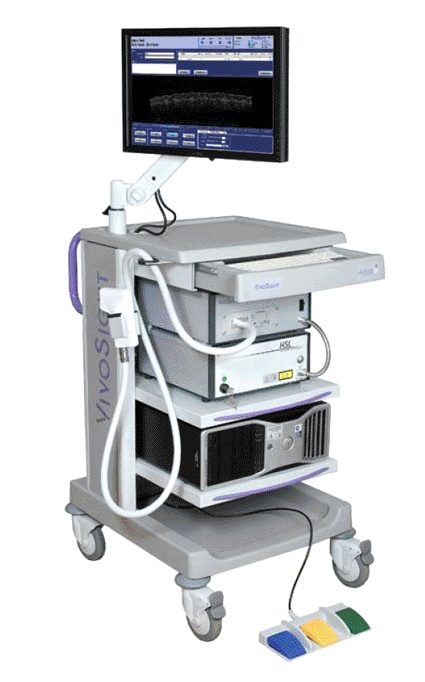OCT Imaging of Microneedles Used for Transdermal Drug Delivery Research
By LabMedica International staff writers
Posted on 28 Oct 2010
An optical coherence tomography (OCT) imaging system is being used to evaluate the performance of a new microneedle drug-delivery technology. The system was used to image directly the microneedles penetrating the skin, and the results were used to evaluate the effects of microneedle spacing and force of application.Posted on 28 Oct 2010
Michelson Diagnostics, Ltd. (MDL; Opington, Kent, UK), a provider of clinical OCT imaging systems, reported the use of its VivoSight OCT imaging system is being employed to evaluate the performance of a new microneedle drug delivery technology by researchers at Queen's University Belfast (Ireland) led by Dr. Ryan Donnelly. The research was published online August 18, 2010, in the Journal of Controlled Release.

Image: The VivoSight OCT imaging system (photo courtesy Michelson Diagnostics).
Drug delivery systems using microneedle arrays are of great interest to pharmaceutical companies who would like to alleviate the discomfort of the standard hypodermic needle with an easy to administer, painless drug delivery method. Many companies are developing microneedle technology, targeting a wedge of the [US]$18 billion drug delivery device market. The microneedles range from hollow or coated steel arrays to biodegradable polymer needles that dissolve once injected.
Microneedle developers aim to design devices that are effective at penetrating the surface layer of skin, known as the stratum corneum, to deliver drugs to the dermis, while being short and narrow enough to avoid stimulating the dermal nerves and causing discomfort. It is important to understand how a change in microneedle design and application method affects the device performance.
According to the authors of the article, "The successful use of OCT in this study could prove to be a key development for polymeric micro-needle research, accelerating their commercial exploitation.”
"The VivoSight system is a unique tool for transdermal drug delivery development. It is the only clinical technology that can image the needles in situ, in real time,” said Dr. Daniel Woods, senior imaging scientist at Michelson Diagnostics, Ltd., adding, "The high-resolution and extended penetration depth of VivoSight mean that researchers can really understand how the needles interact with the skin.”
The VivoSight Topical OCT system is indicated for use in the two-dimensional, cross-sectional, real-time imaging of external tissues of the human body. This indicated use allows imaging of tissue microstructure, including skin, to aid trained and competent clinicians in their assessment of a patient's clinical conditions.
Michelson Diagnostics develops imaging products using a technology called multi-beam optical coherence tomography. The technology provides real time images of up to 2 mm into tissue with a resolution of better than 10 microns. The company's products include the EX1301 OCT microscope, which is used by researchers in a variety of fields including dermatology, developmental biology, and industrial metrology; and the VivoSight OCT scanner which has CE and U.S. Food and Drug Administration (FDA) 510(k) clearance for use to aid clinical judgments in the field of dermatology. Applications of VivoSight include nonmelanoma skin cancer screening and guiding skin cancer surgery.
Related Links:
Michelson Diagnostics













